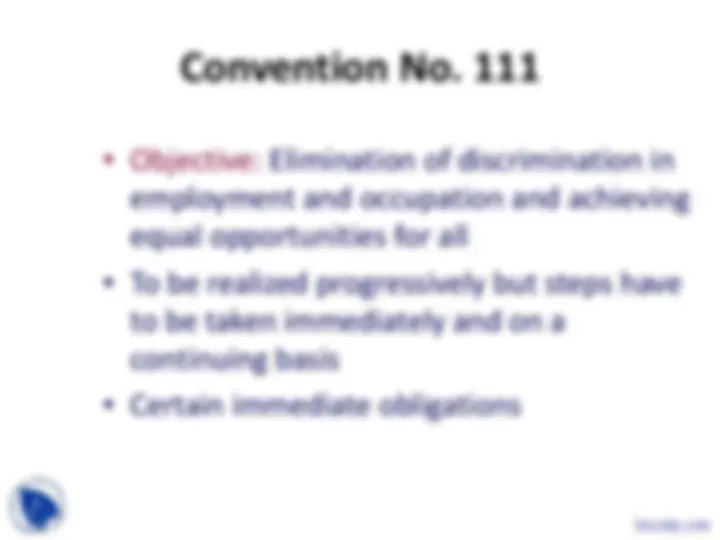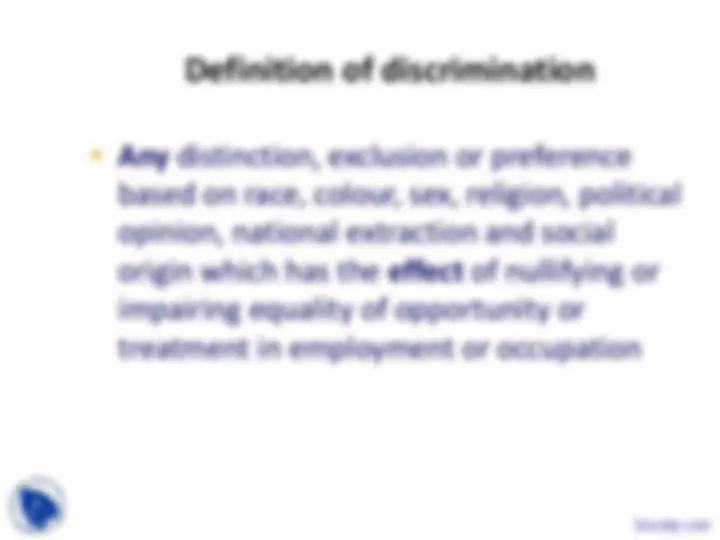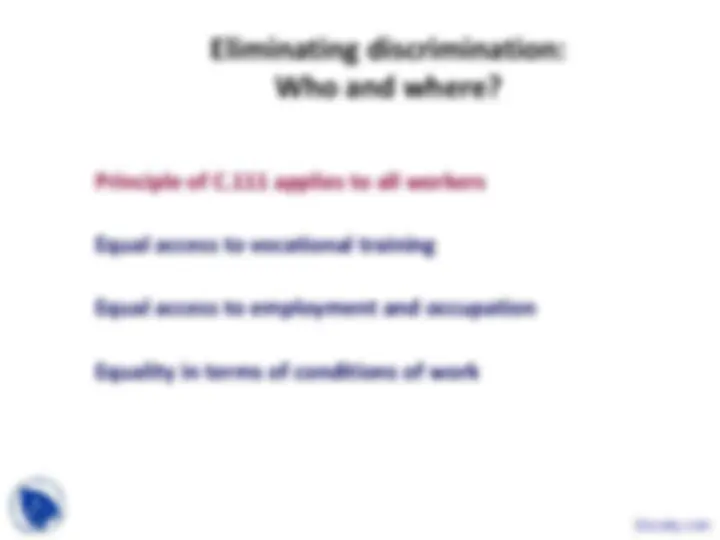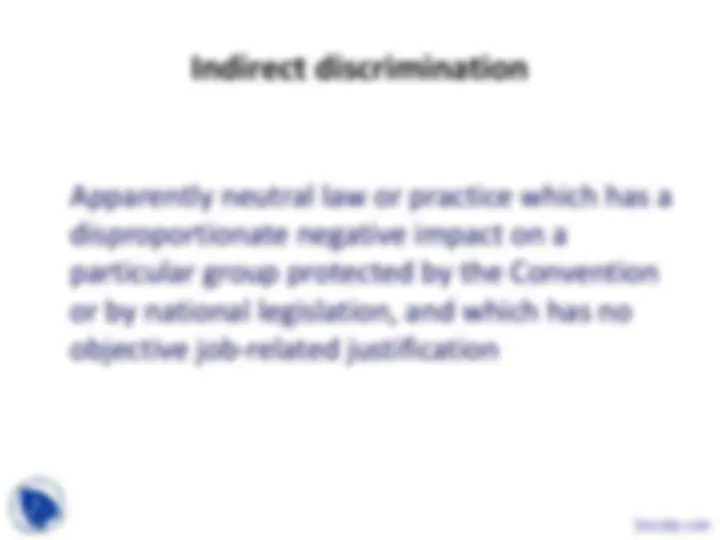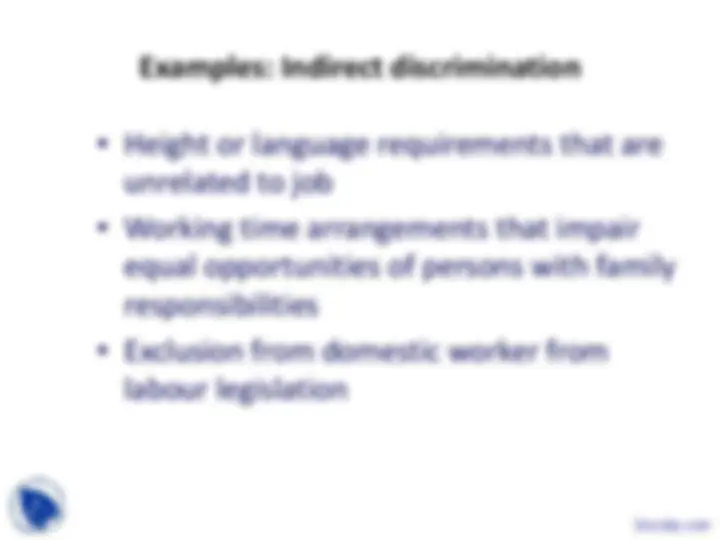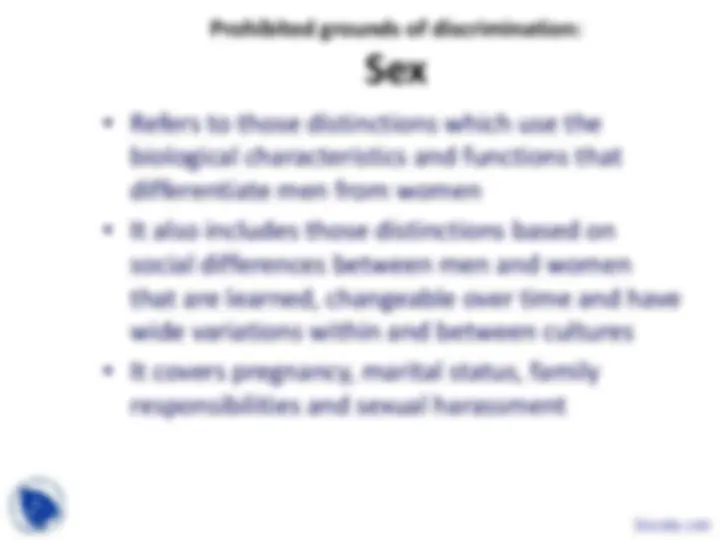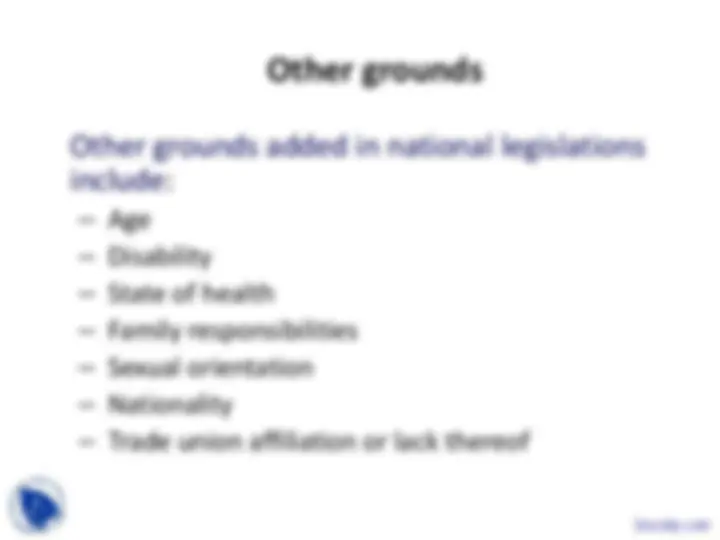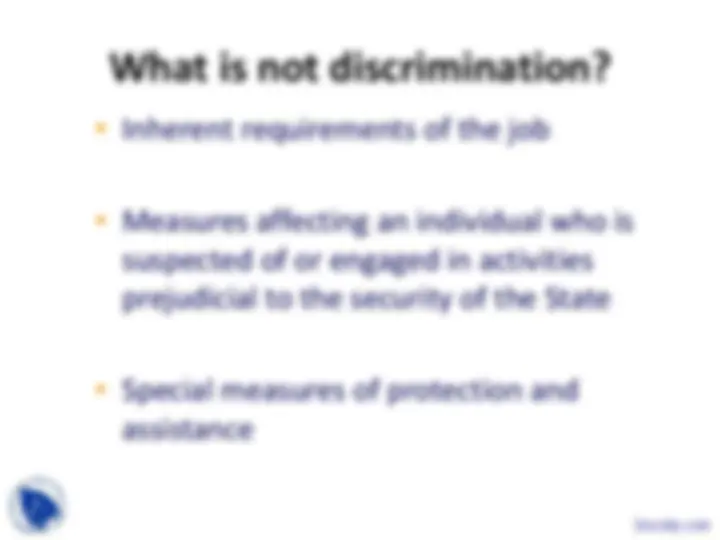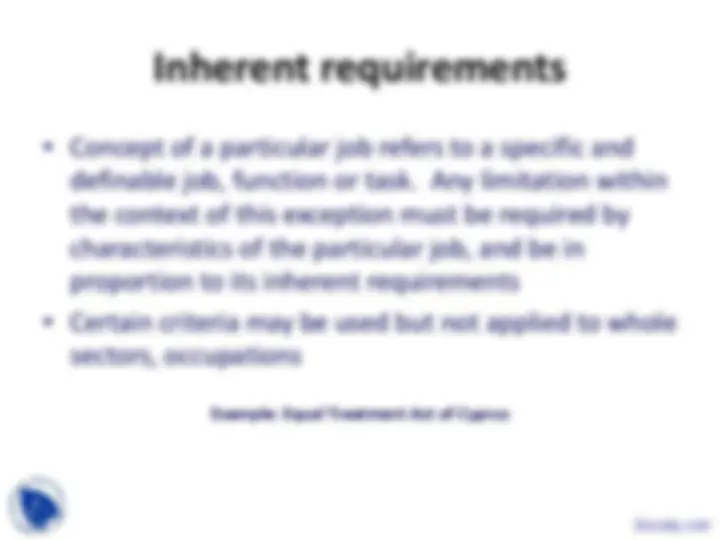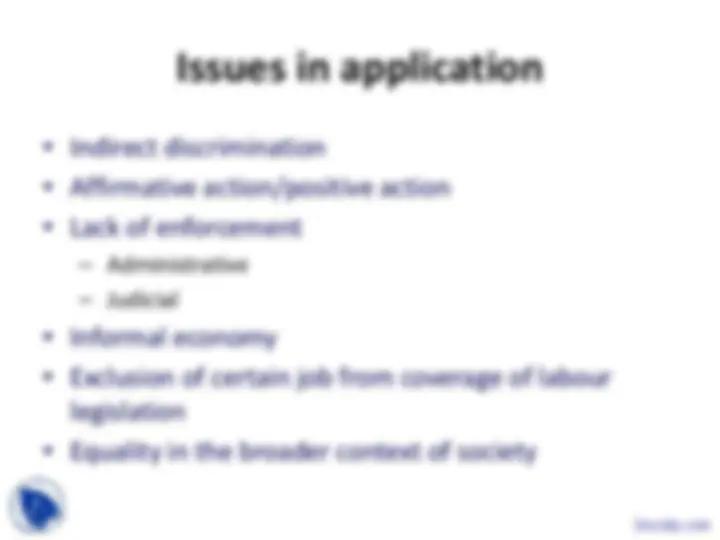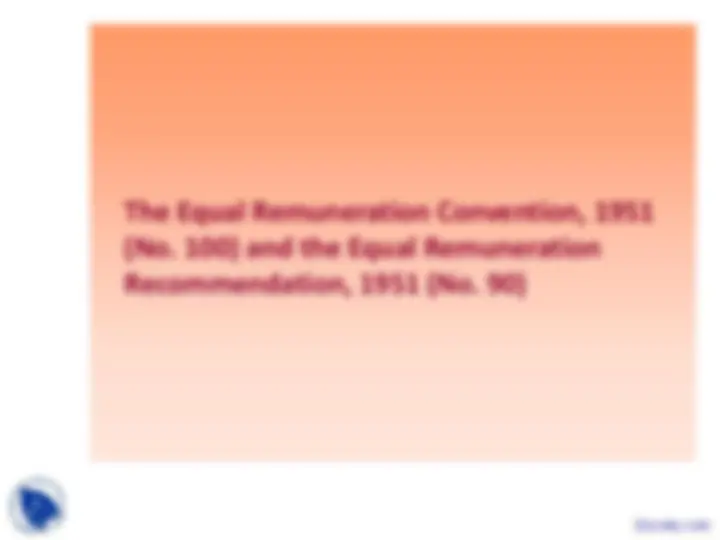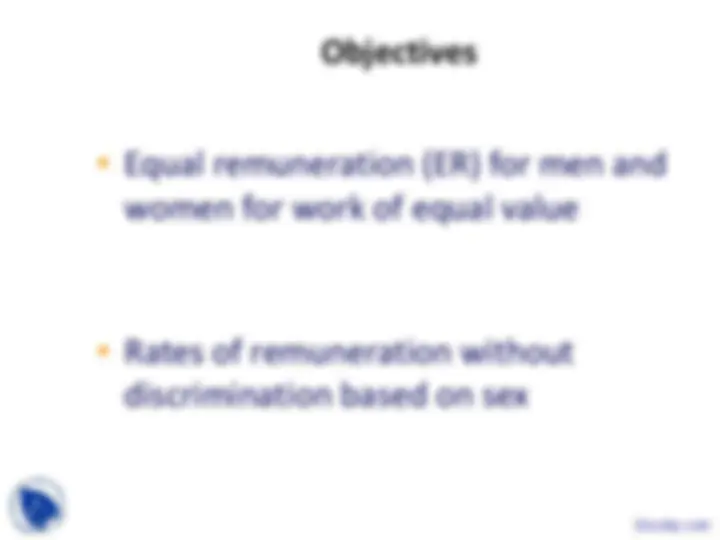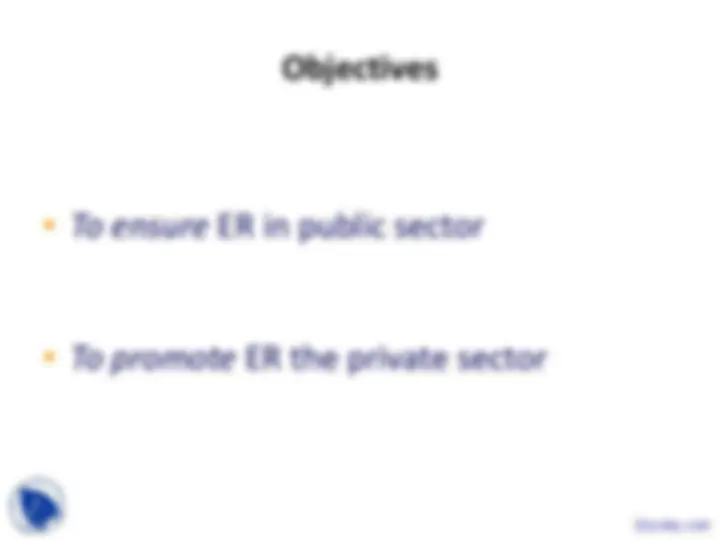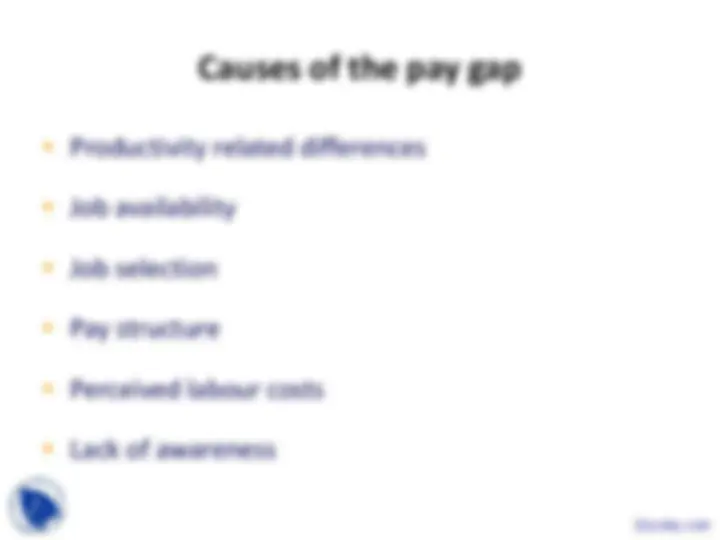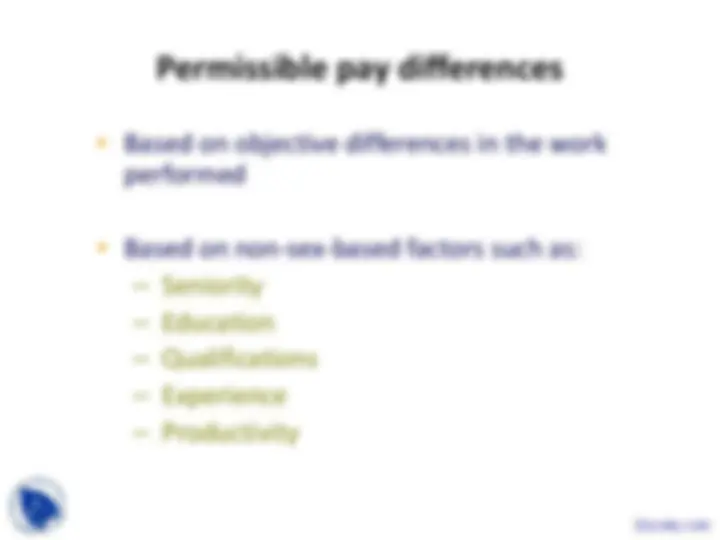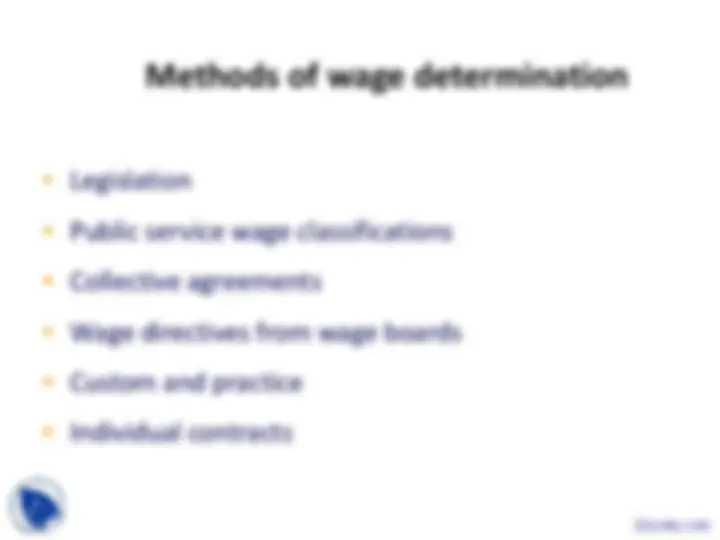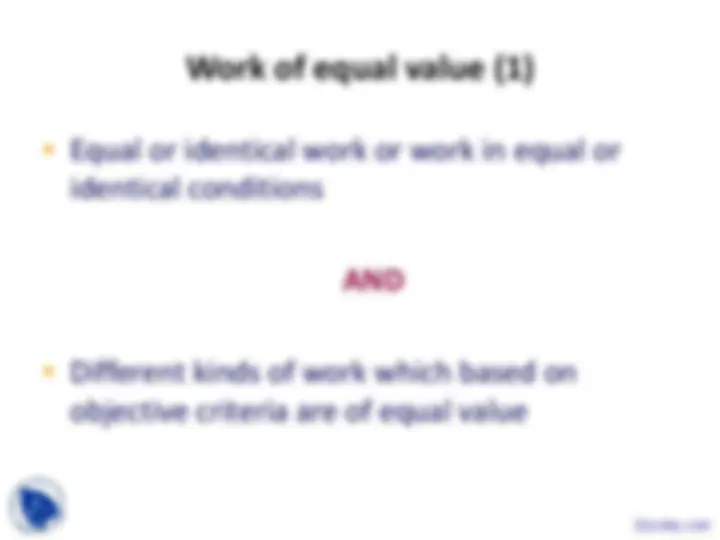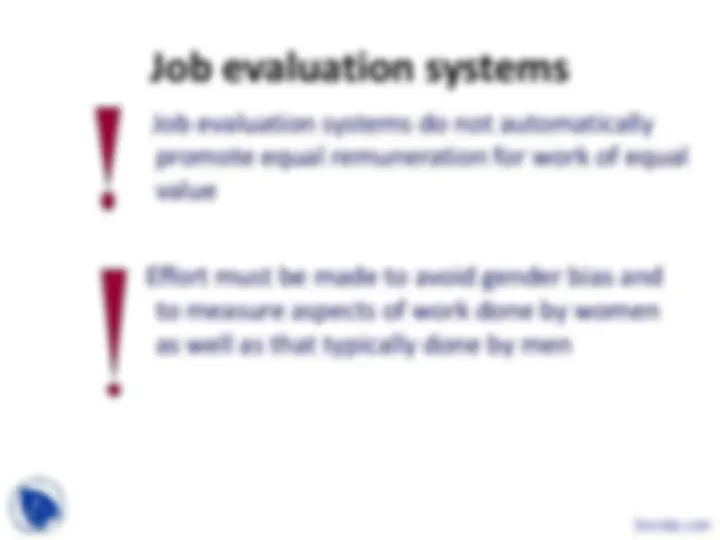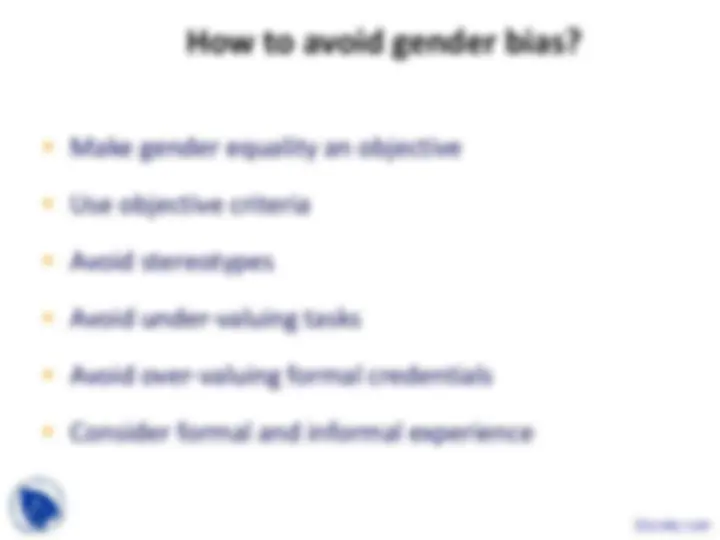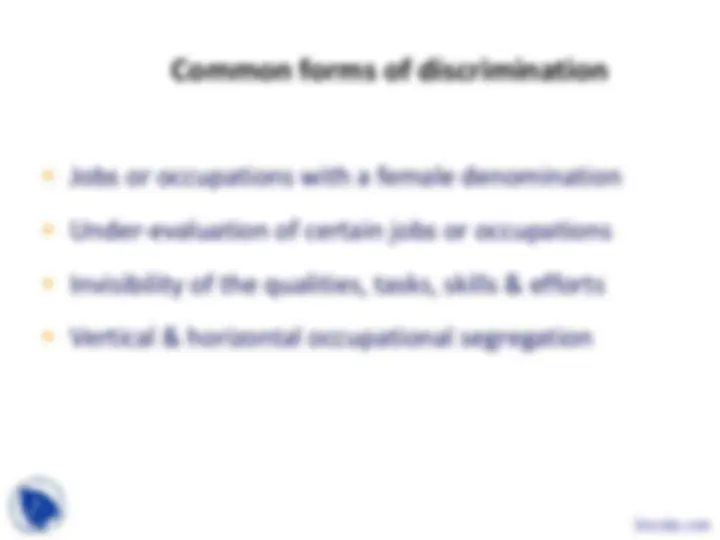Download Understanding Discrimination & Equality in Employment: Focus on Convention No. 111 (1958) and more Slides Introduction to Sociology in PDF only on Docsity!
Equality of opportunity and
treatment in employment and
occupation
Fundamental instruments
on equality
- The Discrimination (Employment and Occupation) Convention, 1958 (No. 111) and the Discrimination (Employment and Occupation) Recommendation, 1958 (No. 111)
- The Equal Remuneration Convention, 1951 (No. 100) and the Equal Remuneration Recommendation, 1951 (No. 90)
Definition of discrimination
- Any distinction, exclusion or preference
based on race, colour, sex, religion, political
opinion, national extraction and social
origin which has the effect of nullifying or
impairing equality of opportunity or
treatment in employment or occupation
Eliminating discrimination:
Who and where?
Principle of C.111 applies to all workers
Equal access to vocational training
Equal access to employment and occupation
Equality in terms of conditions of work
Examples: Direct discrimination
- Job advertisement excluding applicants of a certain gender, age, or complexion
- Practice of hiring only persons of a certain ethnicity
- Exclusion from certain public sector jobs due to political opinion, religion or ethnic origin
- Exclusion of women to enter the police force or fire brigades
- Restricting working time of women, e.g. overtime
- Restricting women’s access to certain occupation
Indirect discrimination
Apparently neutral law or practice which has a
disproportionate negative impact on a
particular group protected by the Convention
or by national legislation, and which has no
objective job-related justification
Prohibited grounds of discrimination:
Sex
- Refers to those distinctions which use the biological characteristics and functions that differentiate men from women
- It also includes those distinctions based on social differences between men and women that are learned, changeable over time and have wide variations within and between cultures
- It covers pregnancy, marital status, family responsibilities and sexual harassment
Sex/gender discrimination: Examples
- Male preference in hiring
- Mandatory pregnancy testing or questions regarding planned pregnancies during recruitment
- Women are forced to retire upon marriage or pregnancy or requiring women not to get pregnant or marry
- Excluding women from dangerous job without any justification related to pregnancy or maternity
- Working time arrangements that are not related to the requirements of the work that make it impossible for women to carry out the job
- Gender-biased allocation of benefits and allowances
Other grounds
Other grounds added in national legislations
include:
- Age
- Disability
- State of health
- Family responsibilities
- Sexual orientation
- Nationality
- Trade union affiliation or lack thereof
What is not discrimination?
- Inherent requirements of the job
- Measures affecting an individual who is
suspected of or engaged in activities
prejudicial to the security of the State
- Special measures of protection and
assistance
Special measures
Special measures of protection or assistance provided for in ILO Conventions or Recommendations are not discrimination
Special measures agreed by workers and employers designed to meet special requirements of workers i.e. based on sex, disability, age, family responsibilities, or social or cultural status are not discrimination
Special temporary measures
Enactment of legislation is insufficient to
eliminate discrimination in practice. States can
take special temporary measures to remedy
existing inequalities through affirmative action
such as:
- Preferential treatment
- Monitoring and evaluation
- Setting targets
The Equal Remuneration Convention, 1951
(No. 100) and the Equal Remuneration
Recommendation, 1951 (No. 90)
Objectives
- Equal remuneration (ER) for men and
women for work of equal value
- Rates of remuneration without
discrimination based on sex

